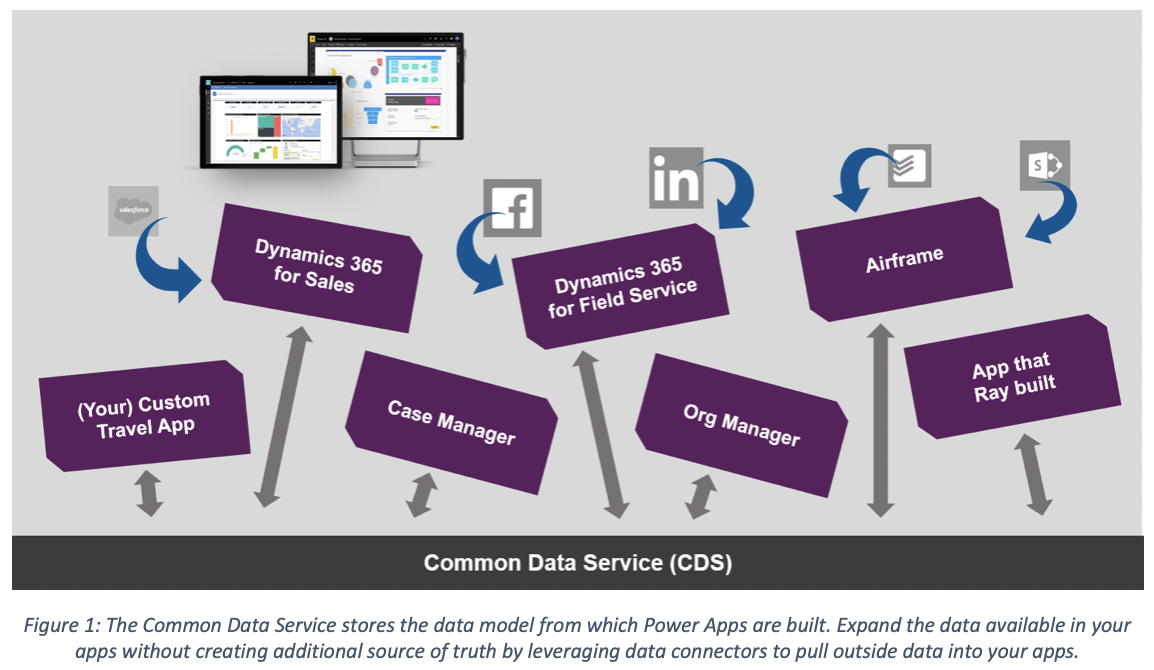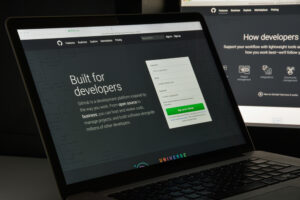Power Platform is Microsoft’s newest pillar in its cloud platform stack, steadily growing in popularity as more and more organizations realize the capability of the tool. Put into the hands of experienced developers, the Platform can expedite the development of highly complex organizational applications. Provided to citizen developers, the Platform connects them to organizational data and allows them to automate personal and team workloads. At an organizational level, IT has insight into who is doing what where and for whom – and the ability to secure, manage, and govern it. It is a first-class platform.
So, why has it taken so long to be recognized as such? Part of the problem is a misunderstanding around what “low code” means.
When you hear the phrase “low code,” you shouldn’t be thinking “low thought” or “low quality.” Rather, think of low code as short-hand coding. The team at Microsoft has done a large chunk of the pre-work by setting up your Azure database (that’s right – the Power Platform is built on Azure!) so that you can focus more on the parts of your solution that are unique to your organization and less about the base architecture that is consistent between solutions.
The Platform offers several drag-and-drop features, many templates, and hundreds of premade data connectors you can utilize to get apps into minimum viable product (MVP) shape quickly. It also lets you use traditional coding to beef up these apps, allowing highly customizable experiences designed to fit your precise business use case. It democratizes the ability to create apps by having both ends of the spectrum covered, allowing a community to exist globally (and organizationally) between citizen developers who just want to make their jobs a little easier and professional developers whose full-time job is building.
It is this unique feature – the diverse community the Platform is capable of supporting – that really changes the game. The Platform is allowing organizations to rapidly scale their modernization efforts by leveraging resources both in and beyond their IT shops.
The base of most Power Platform solutions is built within the Common Data Service (CDS) – a data model that shapes your model-driven apps, is fed by your canvas apps, and provides a wealth of information to reports published with Power BI. Organizations can deploy multiple solutions to an environment’s CDS, meaning that you can package up a “base solution” – a solution that sets up the common entities that make up the core of your enterprise – and deploy it to all of your Platform environments as a starting point for your developers. Then each app can be packaged up as its own solution and stacked on top of this base, modifying it as needed and even furthering the expediency at which a new solution can be deployed.
The CDS not only contains the data model but also stores the data itself. That means that when you build multiple apps in one environment, you’re creating a single source of truth for all of the applications touching that CDS; pull out processes and data points specific to one business unit but allow them to share the data with other units in the background. Connect your CDS-built apps to other data sources (Azure SQL database, Outlook, or even competing software like SalesForce) using the hundreds of existing data connectors, or create custom connectors, to further utilize existing data and reduce duplicative sources (and the source control issues that go along with it).
Expanding on the need for control of your organization’s data, the Power Platform offers a familiar experience for the system administrators of many organizations by using Azure Active Directory to authenticate users and the O365 Admin Center to manage licenses. Further, the management of the Platform is fortified by the installation and use of the (free!) Center of Excellence Starter Kit. This toolkit provides a starting point to gain organizational insight into the details of how the Platform is being used – locations, environments, flows, makers, connections, apps, and more can be administered with the kit. Drill into each application, tag it, track it, and monitor its usage. Customize the COE Starter Kit and bring a whole new light to what once might have been considered “rogue IT.”
So now that we understand that low code is a good thing, let’s recap what you’re getting with the Power Platform:
- A way to maximize your resources – the low code features enable citizen developers to migrate their own work, and the pre-built features and “short-hand” coding allow your professional developers to focus on the most important and unique features of your organization’s workloads.
- A system meant to scale – built on Azure and backed by Microsoft SLAs, this tool is meant for enterprise use and has the speed and reliability to back it. Enable your citizen developers to modernize their own workloads to speed up your cloud overhaul. Develop & leverage a custom, organization-wide base solution to start every new project with a bulk of known entities already installed and scale your implementations even faster.
- A new level of visibility into your business – the Center of Excellence toolkit allows you to see all of the makers who are building, the apps they’re developing, the connections being made, and more, providing an entirely new window into (and set of control over) citizen development that might have once been seen as “rogue IT.”
To paraphrase Andrew Welch, a Principal Author of the PPAF, on the subject: some business challenges can be solved with custom software development. Some business challenges can be solved with COTS solutions. Everything else is a missed opportunity to transform and modernize in the cloud – for which low-code cloud transformation with the Power Platform is the answer.
AIS is a Microsoft Partner, the premier developer of customer Power Platform solutions, and the publisher of the Power Platform Adoption Framework.
READY TO START YOUR JOURNEY?
AIS can help you when beginning your enterprise adoption journey with Power Platform.







